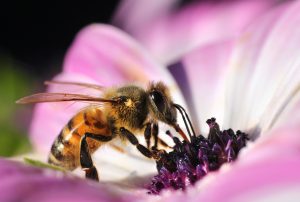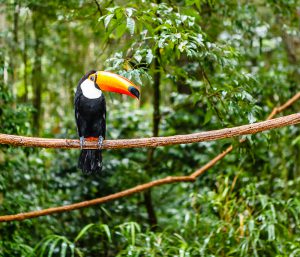Today is Earth Day! Since 1969, when peace activist, John McConnell, proposed an annual festival for promoting environmentalism, it’s been a time for reflecting on the biggest ecological challenges facing our planet and celebrating green initiatives. This year, Earth Day will witness the signing of the Paris Agreement on combatting climate change. Of course, international agreements are absolutely crucial in protecting the environment, but we firmly believe that technological innovation has a key role to play as well.
The IoT in particular has enormous potential in the ecological arena. On the blog, we’ve already discussed how the technology is revolutionizing transport, entertainment and sport – and we think it could offer solutions for some of the most pressing global environmental problems; protection of endangered species and rainforests, as well as driving clean energy sources. To illustrate the point, here are four ways the IoT is already helping out Mother Nature.
The Internet of Seals

There’s widespread concern over falling population levels amongst harbor seals in Orkney, the Scottish archipelago. In some areas, there’s been a 90% drop in recent years, and so marine researchers at the University of St Andrews were keen to discover what was responsible. They needed a way of analyzing the seals’ behavior and monitoring the animals’ movements. Luckily, with some help from Vodafone, they found the perfect answer: IoT technology.
By attaching (completely harmless) telemetry tags to some of the seals, connected to Vodafone’s M2M network, researchers have been able to access data on seals’ diving patterns, movements and oceanic environments, helping them to better understand the reasons behind population decline. We’re proud to say the project has used our Cinterion M2M modules to enable the wireless communication between tags and the researchers’ computers. You can find out more about the Internet of Seals in the YouTube video below.
Solving the honeybee crisis

Another dwindling animal population is honeybees, a decline which could have a devastating impact on agriculture, since bees pollinate over two thirds of the 100 most important crops. The reasons behind the fall in population are complex; pesticides, lack of wild forage, disease and parasites have all played their part. Luckily, the IoT is on hand once again to offer a high-tech ecological solution.
The University of Minnesota, Eltopia, an agricultural tech company, and Gemalto were involved in the project, which involved inserting flexible circuit boards into beehives, enabling the beekeepers to monitor when the bees had capped their honeycomb cells. Using our M2M module and Eltopia’s “BeeSafe” application, the in-hive temperature could be adjusted to destroy any mite eggs, eliminating the parasites and protecting the bees. Essentially, we created a ‘smart bee hive’.
Protecting the Amazon rainforest

IoT technology is also helping prevent deforestation. The Amazon rainforest is under threat from unauthorized logging and other illegal activity, threatening wildlife and risking climatic change. As a result, it’s crucial we find a way to prevent unsanctioned logging from taking place. Luckily, the IoT is providing innovative tracking solutions.
Thanks to clandestine Invisible Tracck devices, which are planted in trees vulnerable to unauthorized harvesting, officials can receive alarms, enabling them to respond quickly and prevent the illegal sale of wood.
Solarkiosk

There’s widespread awareness of the need to shift from fossil fuels to clean power and limit carbon dioxide emissions. This can be particularly difficult in developing countries, where the infrastructure is not always available to implement cleaner sources of power. Fortunately, Solarkiosk, a Berlin-based company, has created a solar energy system for mobile vehicles, which can be used to produce sustainable electricity for remote communities. The IoT has helped Solarkiosk users to manage their energy production.
Using Cinterion modules, the solar panels can be tracked and managed throughout the day by using a web interface. Any energy problems can be immediately flagged by the system. It’s a life-changing solution for communities in rural areas.
As you can see, the IoT is already providing cutting-edge solutions for huge ecological problems. We think its potential is enormous. What do you think of the role of the IoT in saving our planet? Let us know by tweeting to us @Gemalto, or by posting a comment below.
Happy Earth Day!



